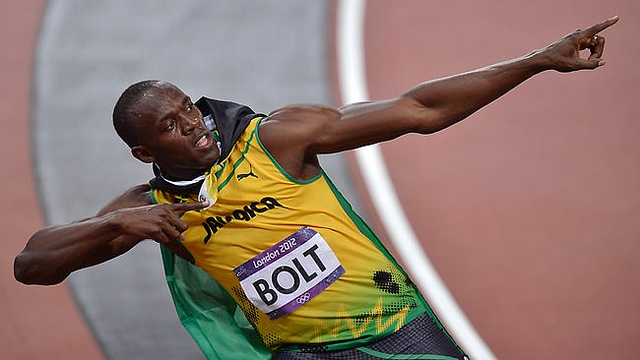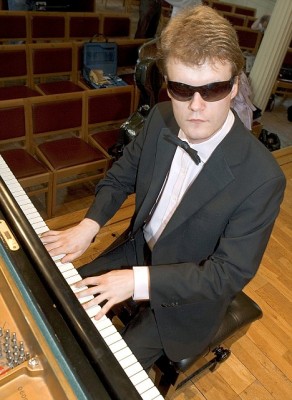Usain Bolt was born to Jennifer Bolt and Wellesley Bolt in a rural town in Trelawny, Jamaica on 21st August 1986, making him one of the older sprinters still competing in track events.
He has a brother Sadiki, and a sister, Sherine. From a very young age, Usain was a sports fanatic, burning off bundles of energy playing football and especially cricket in the streets while his parents minded their small neighborhood grocery store.
It was while he attended the Waldensia Primary School that he first showed his talent for sprinting. At twelve Usain was the fastest runner in the local school’s 100-meter events.

Image: Flickr
Early history
He started focusing on track events during his time at the William Knibb Memorial High School, where he first met up with Olympic athlete, Pablo McNeil who was to become his trainer.
He was sent to Kingston, where he trained with the Jamaica Amateur Athletic Association (JAAA) on the track of the University of Technology, Jamaica.
Usain Bolt started winning international medals in 2001 and became a professional athlete in 2004. In 2005 Glen Mills took over as his trainer and instilled in him a more serious attitude toward Bolt’s training.
Superpower
Although he follows a mostly sensible diet of lean protein and fresh foods, Usain Bolt famously loves gorging on Chicken McNuggets; his incredible performance does not come from his diet. Rather, he has a few other biomechanical plusses not available to the average person.
ACTN3, the “sprinting gene” has also been called the “Jamaican Gene”, as studies show that 75% of Jamaicans carry a predisposition towards fast twitch muscle fibres which provides the explosive power boost necessary for acceleration. Some researchers suggest that Jamaica’s aluminum-rich soil increases the action of the gene.
Bolt is much taller than other sprinters, and although his length was previously regarded as a negative, it seems that his naturally powerful muscles can achieve a higher than normal leverage from his tall limbs to propel him forward fast. But the real secret to his success only becomes apparent with the exact measuring of sprint athletes’ performance millisecond by millisecond.
Sprinters accelerate fast but start slowing down almost immediately. Our eyes tell us that Bolt accelerates from the pack after a certain point to win the race. It is an illusion, as Bolt does not move up into an extra higher ‘gear.’
Usain Bolt too hits his top speed at the 70-meter mark whereafter his speed starts dropping. When he pushes his way to a win, Bolt isn’t tearing away from the others at an increased pace.
Rather, his speed decreases at a slower rate than the others, even if it is only by a minute fraction of a second per 10 meters. In a race, every millisecond is vital, and this special version of built-in endurance has produced a phenomenon never seen before on the track.
What can we learn from him?
Usain Bolt suffers from an abnormal curvature to his spine; a condition called scoliosis, which should have put him at a considerable disadvantage in sports. He was only able to overcome most of the obstacles after Mills set up a professional performance team to assist Bolt.
His natural, easy confidence, wicked sense of humor and laid-back attitude everywhere except on the track has made him a popular public figure. Throughout his career, he has insisted on living his life to the full and never asking for anyone’s permission to do so.
What is he currently doing?
Usain Bolt is worth over $60 million and as a notable philanthropist spends much of it on charity work. His foundation works at improving community structures and sporting provisions and bursaries for talented Jamaicans.
He is well known for providing for Jamaicans in every sponsorship deal; Puma sends yearly sports equipment to Bolt’s alma mater, and adverts featuring the athletics star are usually filmed by Jamaicans in Jamaica to show his support of local Jamaican enterprise.
His app that features pirates - and speed - has been downloaded over a billion times. He travels a lot and regularly hangs out with celebrities.
He loves music and has DJ-d public sets since 2010 and is known for lavish parties and a popular Jamaican restaurant and sports bar.
He spends most of his time on the track, and intends retiring after the IAAF World Championships in London in 2017.






